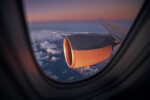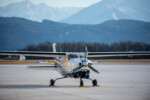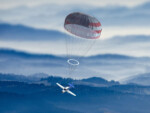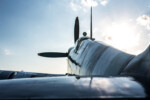Unveiling the Flight Range: How Far Can A Cessna Fly?
9 November 2023 | Updated on February 05, 2024
Welcome aboard as we embark on an exciting exploration of the flight range of Cessna aircraft! From the long-haul capabilities of the Cessna Citation Longitude to the versatile nature of the Cessna 172, we’ll delve into the distances these remarkable aircraft can cover. So, fasten your seatbelts and let’s take flight to discover just how far a Cessna can soar!
Key Takeaways:
- The new Cessna Citation Longitude offers a flight range of 4,000 nm, enabling nonstop journeys across continents.
- The Cessna 172, renowned for its reliability, has a cruising range of over 650 nautical miles, making it suitable for various types of flights.
- Factors such as fuel efficiency, wind conditions, altitude changes, and payload weight affect the distance a Cessna can cover.
- The Cessna 172 opens up opportunities to explore remote destinations and breathtaking landscapes that may be inaccessible by other means of transportation.
- Pilots can maximize the distance covered in a Cessna by monitoring fuel consumption, selecting optimal cruising altitudes, and planning for suitable refueling locations.
The Range of the Cessna 172
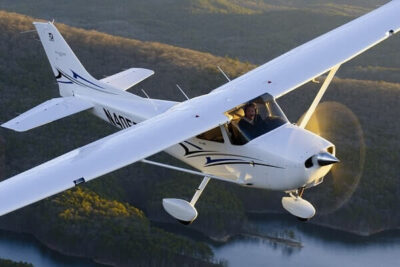

The Cessna 172 is a versatile aircraft known for its reliability and range. It has become a popular choice for flight schools, private owners, and military training programs. With its impressive cruising range, the Cessna 172 is suitable for both short hops and longer journeys, providing flexibility for pilots and passengers alike.
On a full tank of fuel, the Cessna 172 can cover over 650 nautical miles, making it a reliable option for various flight plans. However, it’s important to note that several factors can influence the aircraft’s distance capabilities. Fuel efficiency plays a significant role in determining the range, as well as factors such as wind conditions, altitude changes, and payload weight. These factors should be carefully taken into consideration to ensure accurate flight planning and maximize its range.
While the Cessna 172’s range can vary depending on these factors, on average, it can cover over 650 nautical miles with around 56 gallons of fuel and a consumption rate of 10-12 gallons per hour. It’s important for pilots to monitor fuel consumption throughout the flight and make any necessary adjustments to ensure a safe and efficient journey.
| Factors | Impact on Range |
|---|---|
| Fuel efficiency | Crucial factor in determining range |
| Wind conditions | Can impact fuel consumption and distance covered |
| Altitude changes | Can affect fuel consumption and range |
| Payload weight | Heavier payload may reduce range |
Overall, the Cessna 172 offers a reliable and versatile range that caters to various flight needs. With careful consideration of fuel efficiency and other relevant factors, pilots can maximize the distance covered, making the Cessna 172 an excellent choice for pilots looking for flexibility and reliability in their aircraft.
Factors Affecting Distance in Aviation
Several factors can influence the distance an aircraft can cover, impacting its flight range and overall performance in the skies. It is important for pilots to consider these factors when planning their routes and ensuring a safe and efficient journey.
Fuel Capacity and Consumption Rate
One of the primary factors that affect flight distance is the fuel capacity and consumption rate of the aircraft. The amount of fuel an aircraft can carry and how efficiently it consumes that fuel directly impacts how far it can fly. Pilots must carefully calculate and monitor fuel levels to ensure they have enough for the planned journey.
Weather Conditions and Wind Patterns
Weather conditions and wind patterns can significantly impact an aircraft’s performance and flight range. Strong headwinds can increase fuel consumption and reduce the aircraft’s speed and range, while favorable tailwinds can provide a boost, allowing the aircraft to cover more distance with less fuel. Pilots need to consider these factors and adjust their flight plans accordingly.
Altitude and Payload Weight
The altitude at which the aircraft operates and the weight of the payload it carries can also affect its flight range. Higher altitudes typically offer better fuel efficiency due to reduced air resistance, allowing the aircraft to cover more distance. Additionally, the weight of the payload, including passengers, cargo, and fuel, can impact the aircraft’s range, as heavier loads require more fuel to maintain flight.
By taking all these factors into consideration, pilots can make informed decisions, optimize their aircraft’s range, and ensure safe and efficient flights.
Real-World Examples: Cessna 172 Adventures
The Cessna 172 is not just a reliable and versatile aircraft; it’s also the perfect companion for adventurers seeking to explore remote destinations. With its impressive range, the Cessna 172 opens up a world of possibilities for pilots and passengers alike. Whether it’s embarking on long-distance flights or discovering hidden gems off the beaten path, this aircraft delivers unforgettable experiences.
Imagine soaring above the turquoise waters of the Hawaiian Islands, catching glimpses of breathtaking landscapes that can only be truly appreciated from the sky. The Cessna 172 allows you to explore the remote beauty of these tropical paradises, landing on small airstrips that offer easy access to pristine beaches and lush jungles.
“The freedom of flying a Cessna 172 to remote destinations is unmatched. It’s like having a key to unlock the world’s hidden treasures.” – Experienced Cessna pilot
If mountains and rugged terrains are more your style, the Cessna 172 is an excellent choice for exploring destinations like the Rocky Mountains. As you navigate through towering peaks and valleys, the aircraft’s reliability and maneuverability provide a sense of security, allowing you to fully enjoy the majestic views below.
When it comes to exploring remote destinations, the Cessna 172 truly shines. Its ability to access smaller airfields and its long-distance capabilities make it the perfect aircraft for adventurers seeking to go off the beaten path. However, it’s important to remember that thorough pre-flight planning is essential to ensure a safe and successful journey. By taking the time to plan your route, consider fuel stops, and assess weather conditions, you can embark on incredible Cessna 172 adventures with confidence and peace of mind.
Table: Top Remote Destinations for Cessna 172 Adventures
| Destination | Description |
|---|---|
| Denali National Park, Alaska | Experience the breathtaking beauty of North America’s highest peak and the surrounding wilderness. |
| Trolltunga, Norway | Marvel at the stunning views from the famous cliff rock formation, dangling 2,300 feet above Lake Ringedalsvatnet. |
| Palau, Micronesia | Discover the untouched islands and vibrant coral reefs of this tropical paradise. |
| Antelope Canyon, Arizona | Explore the mesmerizing slot canyons and capture incredible photographs of the intricate rock formations. |
| Isle of Skye, Scotland | Immerse yourself in the rugged beauty of this Scottish island, dotted with dramatic cliffs and fairy-tale landscapes. |
Tips and Tricks for Maximizing Distance in your Cessna 172
When it comes to getting the most out of your Cessna 172’s range, there are several strategies that pilots can employ. By implementing these tips and tricks, you can optimize your flight distance and make the most of your aircraft’s capabilities.
Monitor Fuel Consumption
One of the key factors in maximizing your Cessna 172’s range is closely monitoring fuel consumption. Keep a close eye on your fuel gauges throughout the flight and make sure to calculate and track your fuel burn rate. By doing so, you can better estimate how far you can fly before needing to refuel.
Select Optimal Cruising Altitudes
The altitude at which you fly can also have a significant impact on your Cessna 172’s range. Experiment with different cruising altitudes to find the sweet spot that offers the best fuel efficiency. Factors such as wind patterns and atmospheric conditions can influence the ideal altitude, so it’s important to adapt accordingly.
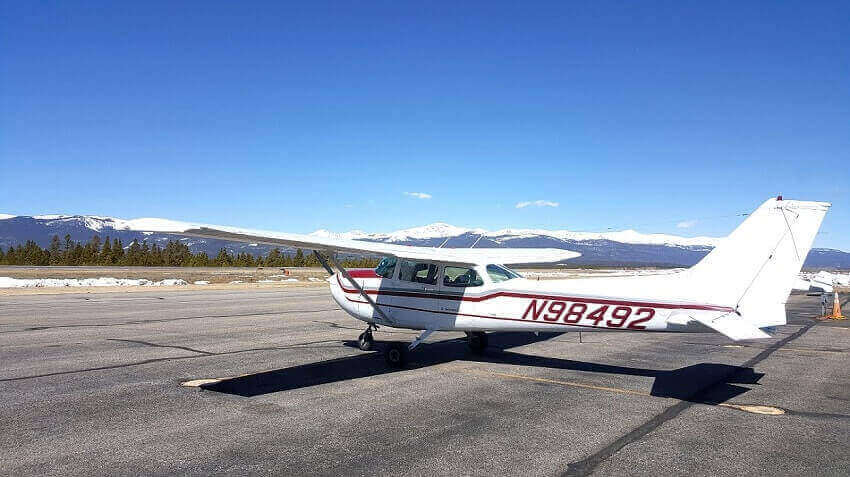

Consider Weather Conditions and Wind Patterns
Weather conditions and wind patterns play a crucial role in determining your aircraft’s range. If possible, plan your flights to take advantage of tailwinds, which can help increase your groundspeed and conserve fuel. Additionally, be mindful of weather conditions and plan routes that minimize the impact of headwinds or adverse weather.
| Tip | Description |
|---|---|
| Thorough pre-flight planning | Plan your route, consider fuel stops, and factor in weather conditions. |
| Optimize payload weight | Travel light, only carry necessary items to reduce the weight of your aircraft. |
| Maintain your aircraft | Regular maintenance ensures optimal performance and fuel efficiency. |
| Practice smooth and efficient flying | Avoid excessive maneuvers and maintain a constant, efficient speed. |
“By implementing these tips and tricks, you can optimize your flight distance and make the most of your aircraft’s capabilities.”
By following these tips and tricks, you can maximize the distance covered in your Cessna 172 and have more efficient and enjoyable flights. From monitoring fuel consumption to selecting optimal cruising altitudes, every small adjustment can make a difference. Remember to always prioritize safety and adhere to proper flight planning procedures. With careful consideration and attention to detail, you can optimize the range of your Cessna 172 and explore new horizons with confidence.
Conclusion
In conclusion, the Cessna aircraft, including models like the Citation Longitude and Cessna 172, offer impressive flight ranges that cater to different needs and purposes. The Citation Longitude, with its range of 4,000 nm, allows for nonstop flights across continents, making it an ideal choice for long-haul journeys. On the other hand, the Cessna 172’s range of over 650 nautical miles provides flexibility for various types of trips, including short hops and longer adventures.
Pilots can optimize the distance covered by taking into account factors such as fuel efficiency, wind conditions, altitude changes, and payload weight. It is essential to carefully plan each flight, considering fuel consumption, selecting optimal cruising altitudes, and monitoring weather conditions and wind patterns. By doing so, pilots can make informed decisions that maximize the range and efficiency of their Cessna aircraft.
With its reliability, versatility, and impressive range, the Cessna aircraft opens up a world of possibilities for pilots and aviation enthusiasts. From exploring remote destinations to embarking on long-distance flights, these planes offer unparalleled scenic experiences. However, it is crucial to prioritize safety at all times by conducting thorough pre-flight planning, adhering to safety protocols, and ensuring suitable refueling locations along the route.
FAQ
How far can a Cessna fly?
The flight range of a Cessna depends on the model. The new Cessna Citation Longitude has a range of 4,000 nm, while the Cessna 172 has a range of over 650 nautical miles.
What factors affect the distance an aircraft can cover?
Several factors can influence the distance an aircraft can fly, including fuel capacity, consumption rate, weather conditions, wind patterns, altitude, and payload weight.
How can I optimize the distance covered in a Cessna 172?
To maximize the distance covered in a Cessna 172, pilots can monitor fuel consumption, select optimal cruising altitudes, consider weather conditions and wind patterns, and plan for suitable refueling locations along the route.
Are the Cessna Longitude and Cessna 172 suitable for long-distance flights?
Yes, the Cessna Longitude has a range of 4,000 nm, allowing for nonstop flights across continents. The Cessna 172, with its range of over 650 nautical miles, provides flexibility for various types of journeys.

























